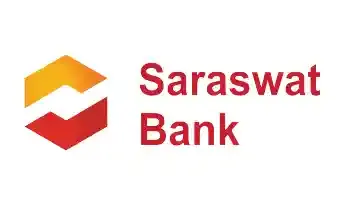Get instant loan offer suitable to your profile !


On this Page:
Explore the distinction between direct or indirect liabilities in education loans in India. Understand secured vs. unsecured loans and key terms for informed decisions.
Facing the costs of higher education can be tricky, especially when you're looking at loans to help you out. It's easy to get lost in all the complicated terms and choices between different types of loans. This blog is here to make things simpler. We'll break down the important stuff about education loans in India, like the difference between secured and unsecured loans and what direct and indirect liabilities mean. Our goal is to help you understand your options better, so you can focus more on your studies and less on the stress of finances. Let's simplify these financial puzzles together and understand direct indirect liabilities meaning in education loan.

Education loans in India cater to a spectrum of academic expenses, supporting students in covering tuition fees, examination costs, library charges, and expenditures for books and equipment. For individuals who want to pursue higher education both domestically and overseas, this all-inclusive financial help is essential. These loans are also divided into two categories: secured and unsecured. Because lenders are less at risk, secured loans, which call for security like real estate or fixed deposits, frequently have lower interest rates. Although they could have higher interest rates, unsecured loans do not require collateral and are usually determined by the borrower's creditworthiness. Students have a variety of options because to this duality, which also makes higher education more affordable and allows them to pursue their academic objectives without worrying about money.

Knowing the important phrases in the field of education loans is crucial. From interest rates and repayment alternatives to moratorium periods and collateral requirements, this section dives into the important vocabulary to provide you the information you need to successfully manage the financial aspects of your academic journey.




The foundation for comprehending more intricate ideas like direct and indirect obligations is laid by these phrases.

The borrower's (the student's) or cosigner's express financial commitment to repay the loan in line with the lender's terms is embodied in direct liability in an education loan. This commitment is immediate and unambiguous, requiring:





Direct liability is created as soon as a loan arrangement is signed, requiring the borrower and cosigner to meet their financial commitments. Breaking these conditions may result in legal action, affect the borrower's credit score, and, in the case of secured loans, maybe lead to the loss of collateral. Prior to taking out an education loan, it is essential to comprehend the definition of indirect direct responsibilities and make plans for them.

In the context of school loans, indirect liability, which is a subset of direct or indirect liabilities, refers to possible monetary obligations that can materialize in certain situations and are not directly related to the original conditions of the loan arrangement. In contrast to direct liability, which is evident and existing as soon as the loan contract is signed, indirect liability includes:



A secondary level of financial risk connected to student loans is indirect responsibility, which is conditional. It highlights how crucial it is to comprehend all the consequences and responsibilities that can affect the borrower and cosigner during the loan's term. This complex type of direct or indirect liabilities in student loans emphasizes the necessity of giving a loan arrangement some thought and preparation before signing it, so that all parties are aware of the possibility of unanticipated financial obligations.

Being proactive is necessary when navigating the waters of direct and indirect liabilities:




Selecting the appropriate education loan is a critical decision. Here are some factors to consider:



From deciding between secured and unsecured choices to comprehending your direct and indirect liabilities, we have attempted to make sense of the many facets of student loans in this guide. GyanDhan wants to help you achieve your academic goals by making the process of obtaining the best education loan as easy as we can. Are you thinking about studying overseas? Allow GyanDhan to help you easily navigate your financial possibilities. We encourage you to check your eligibility with us and see how we can help you lay a solid financial groundwork for your overseas education journey.

Direct liabilities in an education loan refer to the principal amount of the loan and the interest payments that the borrower is directly responsible for repaying. Indirect liabilities might include associated costs not covered by the loan, such as travel expenses and additional study materials, which the borrower needs to manage separately.
Education loans in India can be categorized based on location (domestic or study abroad), the course of education (undergraduate or postgraduate), and security of collaterals and/or guarantee (loan against deposits, property, securities, or third-party guarantee).
A cosigner or co-borrower, typically a parent or guardian, is an individual who jointly applies for an education loan with the primary borrower and is equally responsible for loan repayment, enhancing the chances of loan approval.
The EMI for an education loan is calculated using a mathematical formula that factors in the principal amount, the rate of interest, and the number of years.
An education loan in India typically covers tuition fees, examination and library fees, cost of books and study materials, accommodation and living expenses, and sometimes travel expenses for students studying abroad.
Eligibility for an education loan in India generally includes Indian citizenship, a good academic record, secured admission into a recognized course or institution, and sometimes a co-signer for larger loan amounts.
Check Your Education Loan Eligibility

Ask from a community of 10K+ peers, alumni and experts
Trending Blogs
Similar Blogs

Network with a community of curious students, just like you
Join our community to make connections, find answers and future roommates.. Join our CommunityCountry-Wise Loans
Best Lenders for Education Loan

ICICI Bank

Axis Bank

Union Bank

Prodigy

Auxilo

Credila

IDFC

InCred

MPower

Avanse

SBI

BOB

Poonawalla

Saraswat